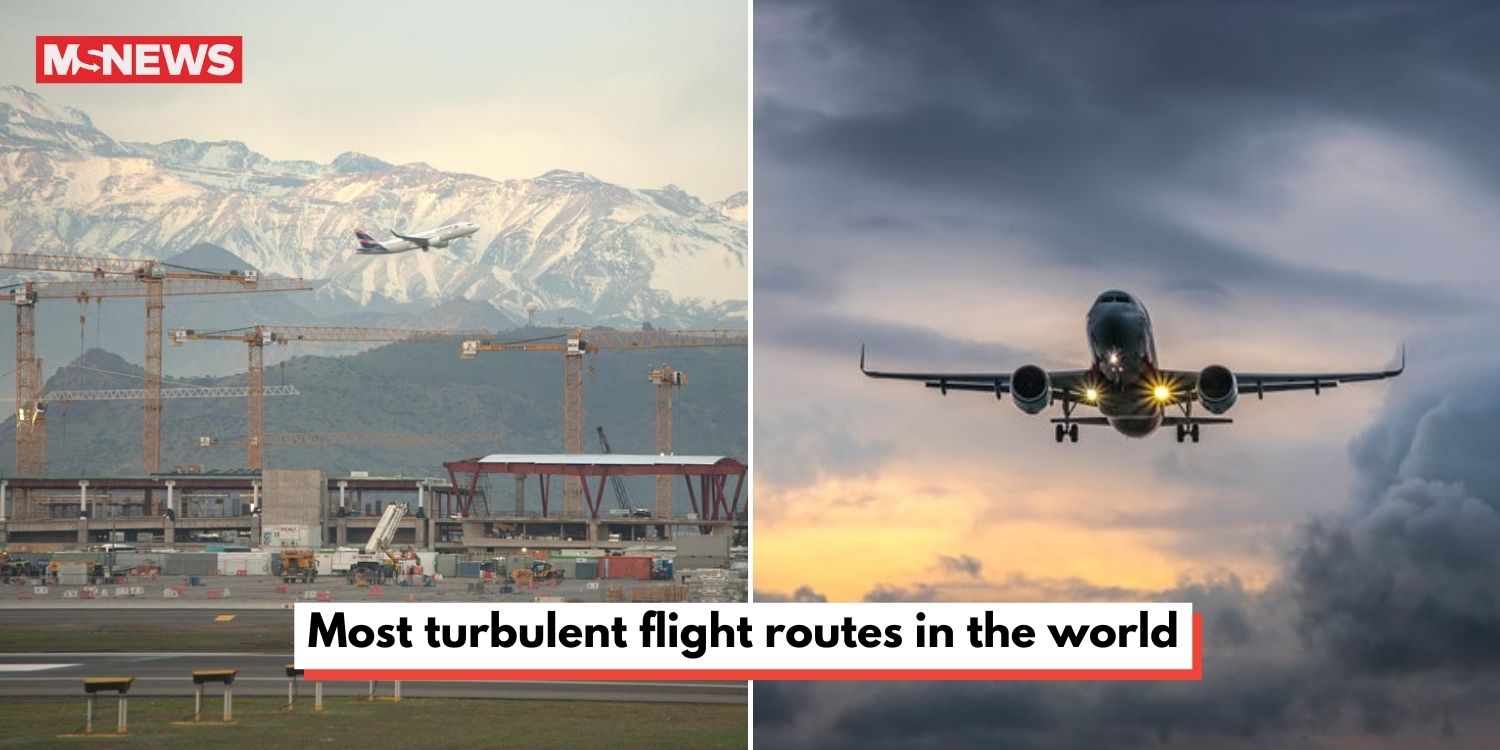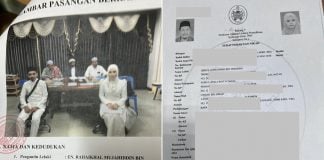Top 10 most turbulent flight routes in the world
The turbulence occurred while the aircraft flew over the Irrawaddy Basin in Myanmar at an altitude of 37,000 feet.
It ended up causing one fatality and multiple injuries. Anxieties concerning flight turbulence have understandably arisen in the wake of the incident.
Turbulence forecasting website Turbli has ranked the flight routes with the highest average turbulence in the world.
According to data, routes in China and Japan are among the top ranks — though numbers show that the turbulence is nowhere near “severe” or “extreme”.
Flights to and from Singapore were not listed in the ranking.
Study analyses flight routes for turbulence intensity
Turbli analysed a total of 150,000 routes, of which only those with active routes as of December 2023 were considered.
The routes were then ranked based on their Eddy Dissipation Rate (EDR).
The Meteorological Assimilation Data Ingest System (MADIS) noted that the measure is “based on the rate at which energy dissipates in the atmosphere”, or the atmosphere’s turbulent state.
The four main levels of turbulence with respect to their EDRs are termed as such:
- Light turbulence — 0-20
- Moderate turbulence — 20-40
- Severe turbulence — 40-80
- Extreme turbulence — 80-100
Top 10 routes experienced ‘light turbulence’ based on EDR
The top 10 most turbulent routes and their corresponding EDRs are as follows:
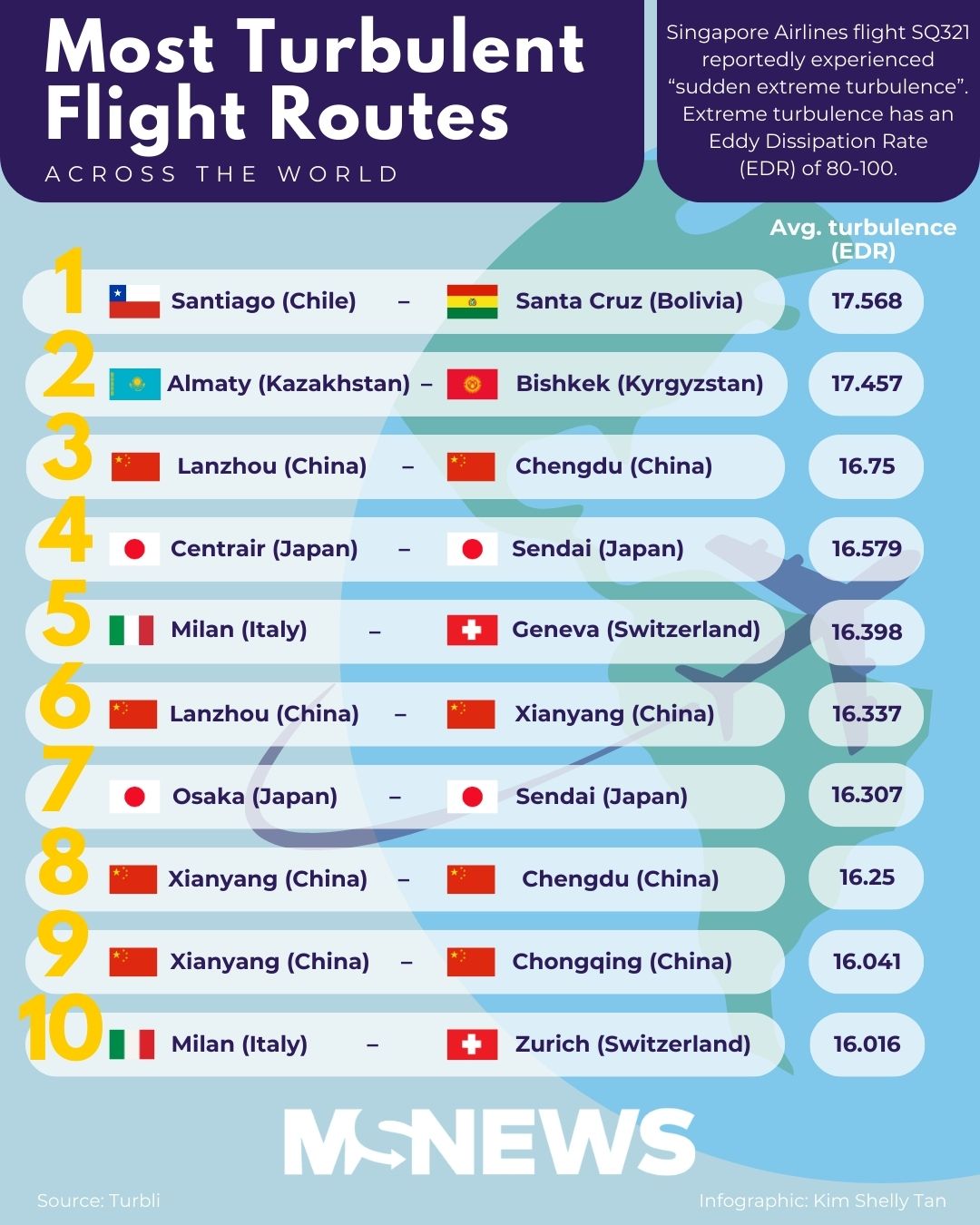
Upon analysis, the route from Santiago Airport in Chile to Santa Cruz Airport in Bolivia emerged as having the highest turbulence intensity.
This route spans 1,905km with an average turbulence of 17.568.

An aerial view of Santiago, Chile. Source: Francisco Kemeny on Unsplash
Flight routes in China and Japan make up more than half of the most turbulent routes.
With an EDR of 16.75, the passage from Lanzhou Airport in Northwest China to Chengdu Airport in Southwest China ranked third on the list.
The route from Centrair Airport in Nagoya, Japan to Sendai Airport in Natori, Miyagi followed in fourth with an EDR of 16.579.
Another Japan route from Osaka Airport to Sendai Airport also made it to the list.
Meanwhile, three routes to and from Xianyang International Airport in Xi’an, Northwest China were also featured on the list.
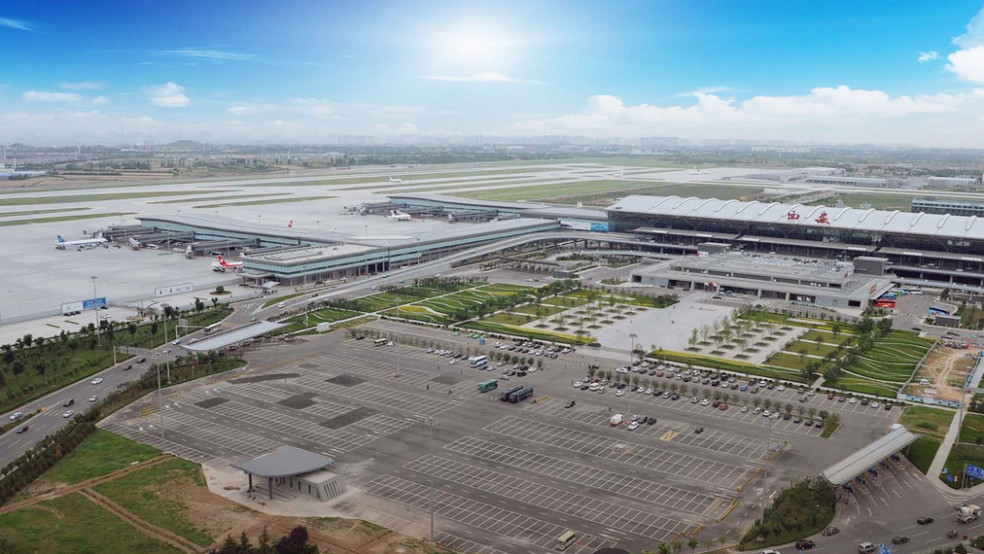
Source: SkyTrax
Even so, all these routes would be regarded as having experienced light turbulence — considering that the top 10 routes had EDRs of less than 20.
According to the U.S. National Weather Service, however, a light aircraft may experience a “perceived severe turbulence” even with a low EDR. Passengers of a larger airliner may feel milder effects.
This is because the EDR is a measure of turbulence intensity without regard to aircraft characteristics.
Severe turbulence on flights is very rare
The Federal Aviation Administration defines turbulence as “air movement created by atmospheric pressure, jet streams, air around mountains, cold or warm weather fronts or thunderstorms”.
Thankfully, experiencing severe turbulence on flights is a very rare phenomenon.
Speaking to Conde Nast Traveller, Isabel Smith from the University of Reading’s Meteorology Department highlighted that only less than 1% of the atmosphere carries severe turbulence.
Instead, travellers are more likely to encounter light turbulence during their journey.
Turbulence happens due to the “shearing of winds or forced airflow up over mountains”, said Smith.
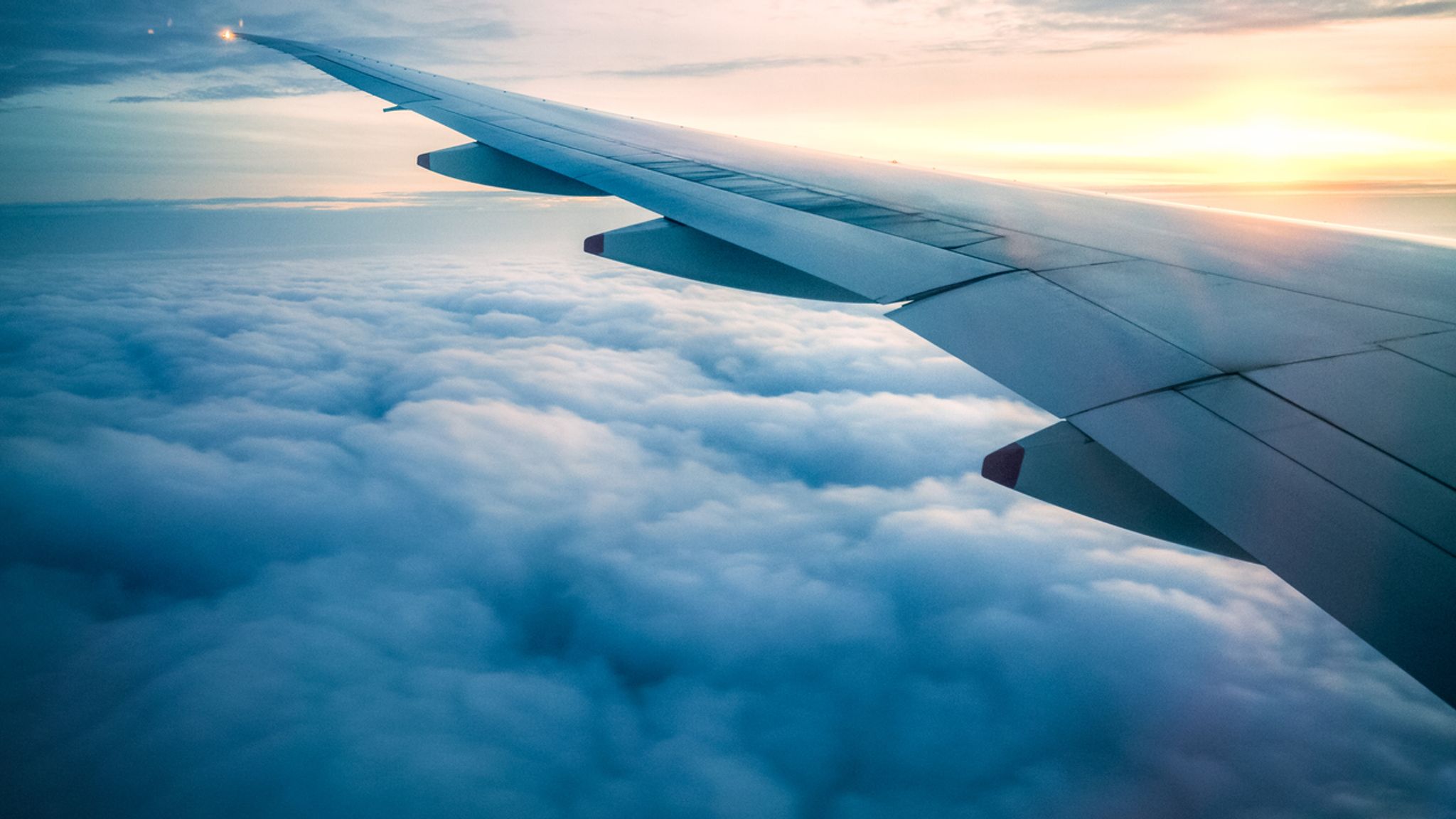
Source: Sky News
“[It] will shake you around and possibly spill over a few drinks but is not dangerous,” Smith said.
However, she added that clear air turbulence (CAT) may occur without warning.
SQ321 was believed to have been struck by this phenomenon, BBC News and Channel NewsAsia (CNA) noted.
CNA reported that CAT can take place at altitudes above 30,000 feet in clear skies.
It may cause individuals to be thrown if they were walking on the aircraft.
Passengers strongly encouraged to fasten seatbelts as much as possible
To prevent potential injuries, passengers are thus advised to fasten their seatbelts as often as they can.
In its efforts to manage on-flight turbulence, SIA has also implemented new safety measures.
For instance, when the seatbelt sign is on, the aircraft will suspend meal and hot beverage services.
Additionally, crew members will need to sit and secure their seatbelts when the sign is turned on.

Source: Aviation Nepal
They will also continue to advise passengers, including those in lavatories, to return to their seats.
With June just around the corner, many individuals and families may be embarking on holiday plans outside of the country soon.
By following the in-flight safety protocols, you can help ensure a safe and pleasant journey for yourself and those around you.
Also read: Singapore Airlines to cease serving meals when seatbelt sign is on
Singapore Airlines to cease serving meals when seatbelt sign is on
Have news you must share? Get in touch with us via email at news@mustsharenews.com.
Featured image adapted from Ops Group and The Weather Channel, for illustration purposes only.
